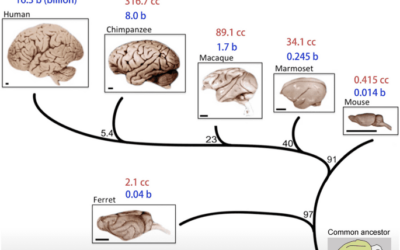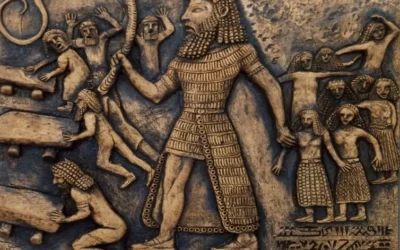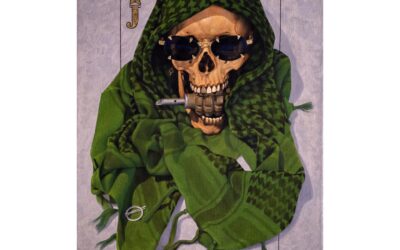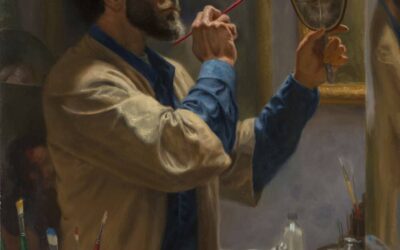What is the Explorer Archetype?

Origins and Characteristics
The Explorer archetype represents the universal human desire for adventure, discovery, and the pursuit of new frontiers. Present in various forms throughout history, the Explorer embodies the qualities of curiosity, independence, and the willingness to take risks in the search for new knowledge and experiences [1]. This article explores the origins, characteristics, and significance of the Explorer archetype, examining its role in shaping human culture and consciousness.
Explore all the Archetypes
The Explorer Archetype in Parts-Based Therapies
In parts-based therapies like Internal Family Systems (IFS), Schema Therapy, and Voice Dialogue, the Explorer archetype can be understood as a distinct part or subpersonality within an individual’s psyche [2].
In IFS, the Explorer may manifest as an adventurous, curious part that seeks out new experiences and pushes the individual to expand their horizons. However, if burdened, the Explorer part may become reckless or fail to consider the consequences of their actions [3].
Schema Therapy views the Explorer as an aspect of the Healthy Adult mode, promoting adaptive risk-taking and openness to new experiences. Maladaptive schemas like Vulnerability or Enmeshment may distort the Explorer’s expression [4].
Voice Dialogue recognizes the Explorer as a unique voice that can be dialogued with to access inner curiosity and a sense of adventure. Imbalances may occur if the Explorer voice dominates or is suppressed by other voices [5].
The Explorer’s Role in the Hero’s Journey
In the Hero’s Journey, the Explorer archetype often appears as the catalyst that sets the hero on their path, or as the hero themselves, venturing into unknown territories and facing challenges in the pursuit of growth and discovery [6]. The Explorer’s curiosity and courage are essential for the hero’s transformation.
The Role of the Explorer in Prehistory and Ancient History
In prehistoric times, the Explorer archetype was embodied in the role of the hunter, gatherer, or nomad, who ventured beyond the safety of the known world in search of new resources and opportunities [7]. Ancient civilizations celebrated Explorer deities like Hermes (Greece), Mercury (Rome), and Legba (West African), honoring the spirit of adventure and the crossing of boundaries [8].
The Explorer in Literature and Art
The Explorer archetype has been a central figure in literature and art, from the epic heroes of ancient mythology to the adventurers and pioneers of modern fiction [9]. Explorer characters like Odysseus, Marco Polo, and Amelia Earhart embody the qualities of courage, curiosity, and the willingness to push beyond the limits of the known world [10].
The Explorer in Psychology and Personal Development
Psychologists like Carl Jung and Abraham Maslow recognized the importance of the Explorer archetype for personal growth and self-actualization [11]. The Explorer represents the individual’s drive to expand their horizons, challenge their assumptions, and seek out new experiences and knowledge [12].
The Shadow Side of the Explorer
The Explorer’s shadow may manifest as a reckless or self-centered individual who pursues adventure and novelty at the expense of others or their own well-being [13]. Integrating the Explorer requires balancing curiosity and risk-taking with responsibility and consideration for the consequences of one’s actions [14].
The Explorer in Relationships, Careers, and Life
The Explorer archetype influences various aspects of life, from personal relationships to career choices. Explorer-oriented individuals may thrive in fields that involve travel, research, or innovation, such as journalism, science, or entrepreneurship [15].
Interpersonal Neurobiology and Somatic Experience
The Explorer archetype shapes our somatic experience, influencing the emotions we tend to emphasize or avoid. Overidentifying with the Explorer may lead to restlessness or a fear of commitment, while neglecting this archetype may result in feelings of stagnation or a lack of vitality [16].
Trauma and the Explorer Archetype
Trauma related to the Explorer archetype can manifest as a fear of the unknown, difficulty taking risks, or a sense of being trapped or confined. Enmeshment with the Explorer may lead to impulsive or self-destructive behavior, while avoidance can result in a narrow, constricted sense of self and the world [17].
The Explorer in Politics and Religion
In politics, the Explorer archetype is often invoked to promote innovation, progress, and the push beyond established boundaries. However, the shadow Explorer may be used to justify colonialism, exploitation, or the disregard for the rights and well-being of others [18]. In religion, the Explorer appears as the seeker or mystic who ventures beyond dogma in pursuit of direct spiritual experience [19].
The Balanced Explorer: Benefits and Opportunities
When balanced, the Explorer archetype enables individuals to approach life with curiosity, openness, and a sense of adventure. Embracing the Explorer can lead to personal growth, the discovery of new opportunities, and the ability to adapt to change and uncertainty [20].
The Explorer in the Modern World
In today’s rapidly changing world, the Explorer archetype is more relevant than ever. The modern Explorer must navigate the challenges of globalization, technological disruption, and the need for innovation and adaptability in an increasingly complex and interconnected world [21].
The Explorer Archetype’s Role in the Evolution of Human Culture and Consciousness
The Explorer archetype has been a driving force in the evolution of human culture and consciousness. By venturing beyond the known world, seeking out new knowledge and experiences, and pushing the boundaries of what is possible, the Explorer has played a crucial role in the development of science, art, and human understanding [22].
The Explorer Archetype in Posture and Somatic Experience
Those embodying the Explorer archetype may have an alert, forward-leaning posture that reflects their curiosity and readiness for adventure. They may experience a sense of restlessness or a tingling sensation in their body when feeling the call to explore. However, when the Explorer feels trapped or limited, they may experience somatic symptoms such as muscle tension, fidgetiness, or a sense of constriction in the body.
Enneagram and MBTI Correlations with the Explorer Archetype
Enneagram: Type 7 (The Enthusiast), Type 8 (The Challenger) MBTI: ENTP (Extraverted, Intuitive, Thinking, Perceiving), ESTP (Extraverted, Sensing, Thinking, Perceiving)
The Explorer Archetype in Screenwriting and Fiction Plotting
The Explorer often serves as the protagonist in adventure stories, journey narratives, or tales of self-discovery. They may be driven by a desire to push boundaries, discover new horizons, or find meaning in their lives through exploration and new experiences.
The Power of the Explorer
The Explorer archetype represents the transformative power of curiosity, courage, and the willingness to venture into the unknown. By understanding and embracing the Explorer within, we can tap into a boundless source of growth, discovery, and the ability to adapt to the challenges and opportunities of an ever-changing world [23].
Bibliography
- Pearson, C. S. (1991). Awakening the heroes within: Twelve archetypes to help us find ourselves and transform our world. HarperCollins.
- Schwartz, R. C. (1995). Internal family systems therapy. Guilford Press.
- Earley, J. (2009). Self-therapy: A step-by-step guide to creating wholeness and healing your inner child using IFS. Pattern System Books.
- Young, J. E., Klosko, J. S., & Weishaar, M. E. (2006). Schema therapy: A practitioner’s guide. Guilford Press.
- Stone, H., & Stone, S. (2011). Embracing ourselves: The voice dialogue manual. New World Library.
- Campbell, J. (1949). The hero with a thousand faces. New World Library.
- Fagan, B. M. (1998). From black land to fifth sun: The science of sacred sites. Helix Books.
- Leeming, D. A. (2005). The Oxford companion to world mythology. Oxford University Press.
- Zweig, P. (1974). The adventurer: The fate of adventure in the Western world. Basic Books.
- Bridges, J. K. (1916). The life & work of Mrs. Bridges: A pioneer woman explorer. Putnam.
- Jung, C. G. (1981). The archetypes and the collective unconscious. Princeton University Press.
- Maslow, A. H. (1968). Toward a psychology of being. Van Nostrand.
- Zweig, C., & Abrams, J. (1991). Meeting the shadow: The hidden power of the dark side of human nature. Tarcher.
- Von Franz, M.-L. (1980). The psychological meaning of redemption motifs in fairytales. Inner City Books.
- Pearson, C. S., & Marr, H. K. (2002). PMAI manual: A guide to interpreting the Pearson-Marr Archetype Indicator instrument. Center for Applications of Psychological Type.
- Siegel, D. J. (2010). Mindsight: The new science of personal transformation. Bantam Books.
- Herman, J. L. (2015). Trauma and recovery: The aftermath of violence–from domestic abuse to political terror. Basic Books.
- Said, E. W. (1979). Orientalism. Vintage Books.
- Underhill, E. (1960). The essentials of mysticism. E. P. Dutton.
- May, R. (1975). The courage to create. W. W. Norton & Company.
- Friedman, T. L. (2005). The world is flat: A brief history of the twenty-first century. Farrar, Straus and Giroux.
- Harari, Y. N. (2015). Sapiens: A brief history of humankind. HarperCollins.
- Keen, S. (1989). Your mythic journey: Finding meaning in your life through writing and storytelling. Tarcher.


























0 Comments